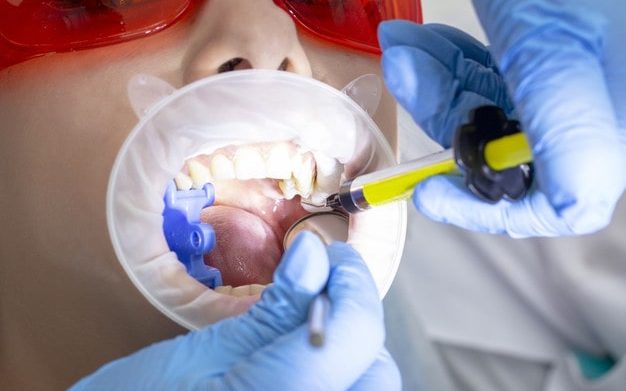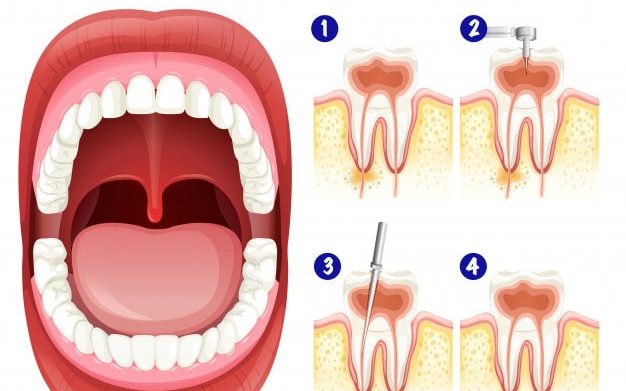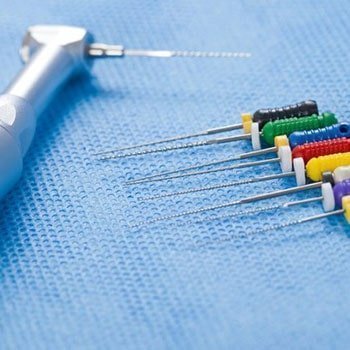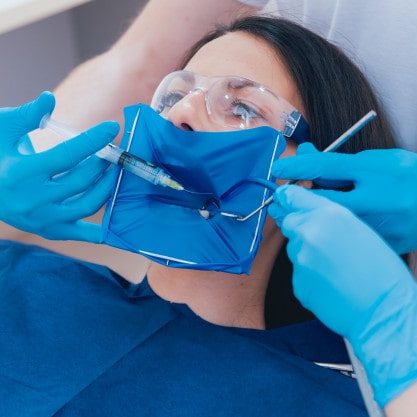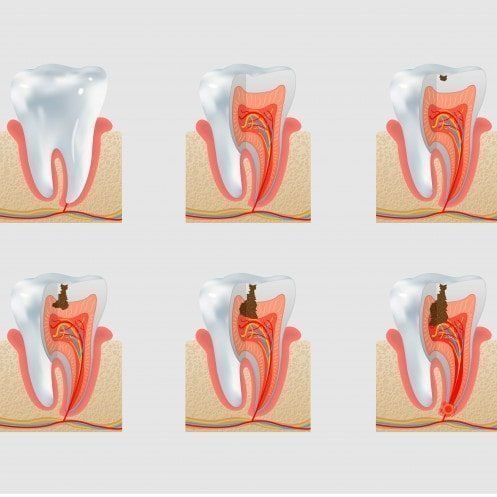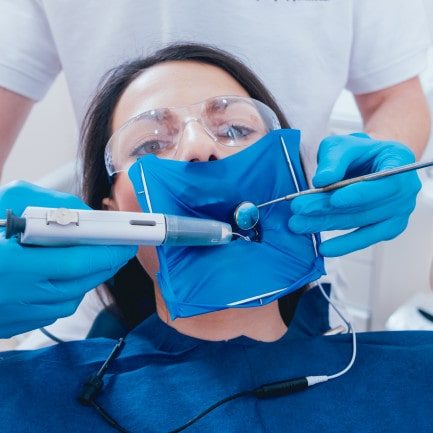Root canal treatment (endodontics) is a dental treatment used to treat an infection in the pulp (living part-nerve) of a tooth. Root canal treatment is not painful and can save a tooth that may need to be completely extracted.
Infection in the pulp (root canal) of a tooth is caused by bacteria that are present in the mouth and invade (affect) the tooth.
This can happen after the following:
- Tooth decay
- Leaking fillings
- Damage to teeth as a result of trauma such as falling
- Abnormal anatomical structure of the tooth
Teeth are composed of the following tissues:
- Enamel – hard tooth coating
- Dentin – the softer tooth tissue that supports the enamel and makes up most of the tooth
- Cementum – the hard tooth tissue covering the surface of the root
- Pulp – the soft tooth tissue consisting of nerves and vessels that exists in the very center of the tooth
- The root canal system contains the tooth pulp and extends from the top of the tooth to the end of the root.
A single tooth may have more than one root canal.
When root canal treatment is needed;
Root canal treatment is necessary when dental x-rays show that the pulp has been damaged by a bacterial infection.
If the pulp becomes infected by bacteria, it can become inflamed, which causes the bacteria to multiply and spread. This condition is usually characterized by pain.
Symptoms of pulp infection include
- Pain when eating or drinking hot or cold food and beverages
- Pain when biting or chewing
- Tooth mobility (mobility – shaking)
- As the infection progresses, the pulp becomes necrosed (tissue dead) and these symptoms often disappear.
When the tooth necroses, i.e. becomes lifeless, it appears to be healed, but the infection has actually spread to the root canal system.
Eventually you will get other symptoms, such as
- Pain when biting or chewing
- Swelling of the gum near the affected tooth
- Inflammation oozing from the affected tooth
- A swollen cheek or chin
- Darkening of the color of the tooth (close to black)
If your tooth is infected, the pulp cannot heal on its own. If the infected tooth is left untreated; a more dramatic picture such as abscess and cyst formation occurs.
Antibiotics, a drug used to treat bacterial infections, are not effective in treating root canal infections
. Only in acute cases can they help treat an infection that spreads around the root and causes swelling.
How is Root Canal Treatment Performed?
- To treat infection in the root canal, the bacteria present in the root canal must first be removed.
- This is done either by removing bacteria from the root canal system (root canal treatment) or by extracting the tooth.
- However, it is generally not recommended to extract the tooth, as it is better to keep natural teeth in the mouth for as long as possible.
- You will usually be given local anesthesia before root canal treatment.
- This ensures that the treatment procedure is painless.
- After the bacteria have been removed, the root canal is filled and the tooth is sealed with a filling or crown.
- In most cases, the inflamed tissue near the tooth heals naturally.
- Root canal treatment is usually successful if done according to the procedures.
- Avoid biting hard foods until your treatment is complete.
- After your last treatment session, it is normal to have pain in your restored tooth for a few days.






